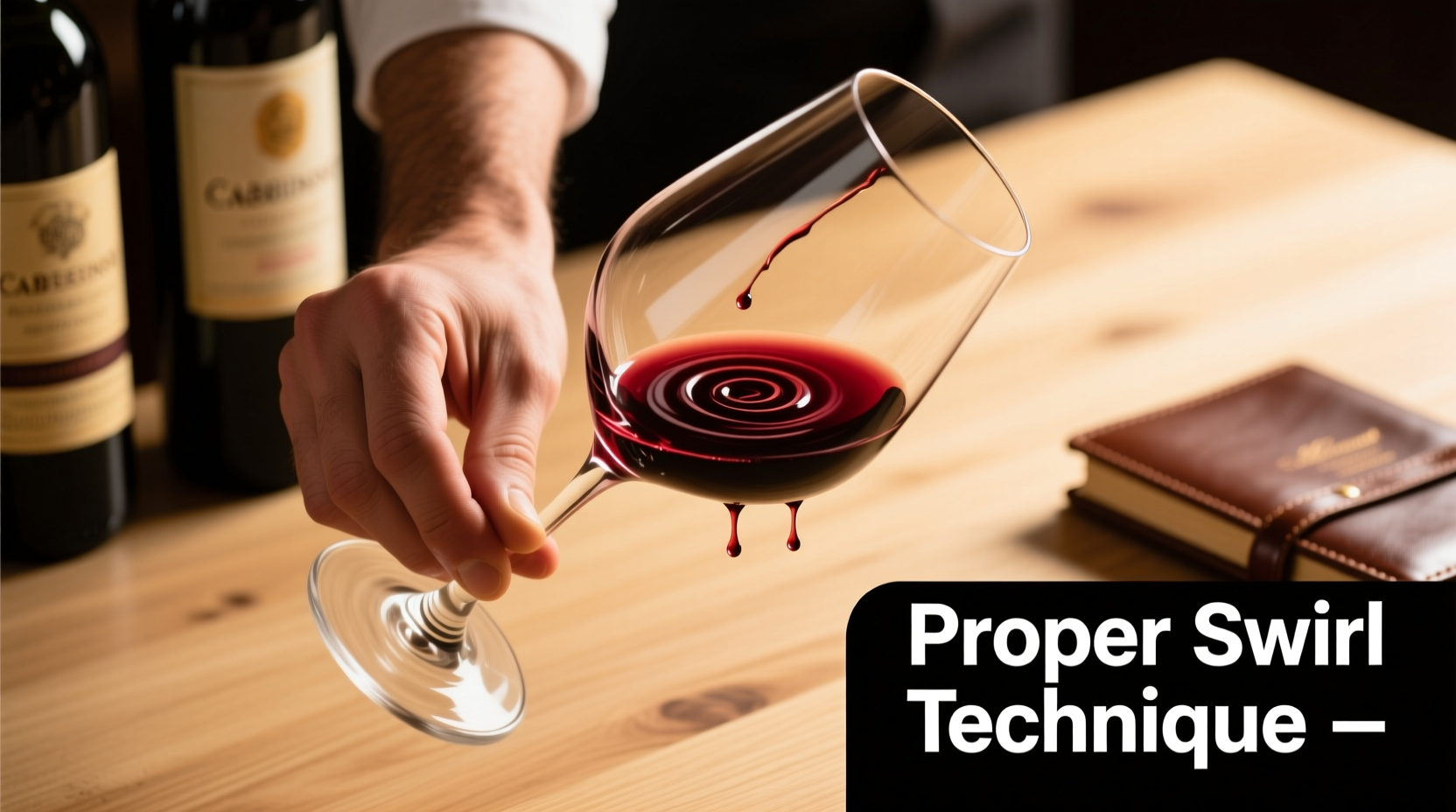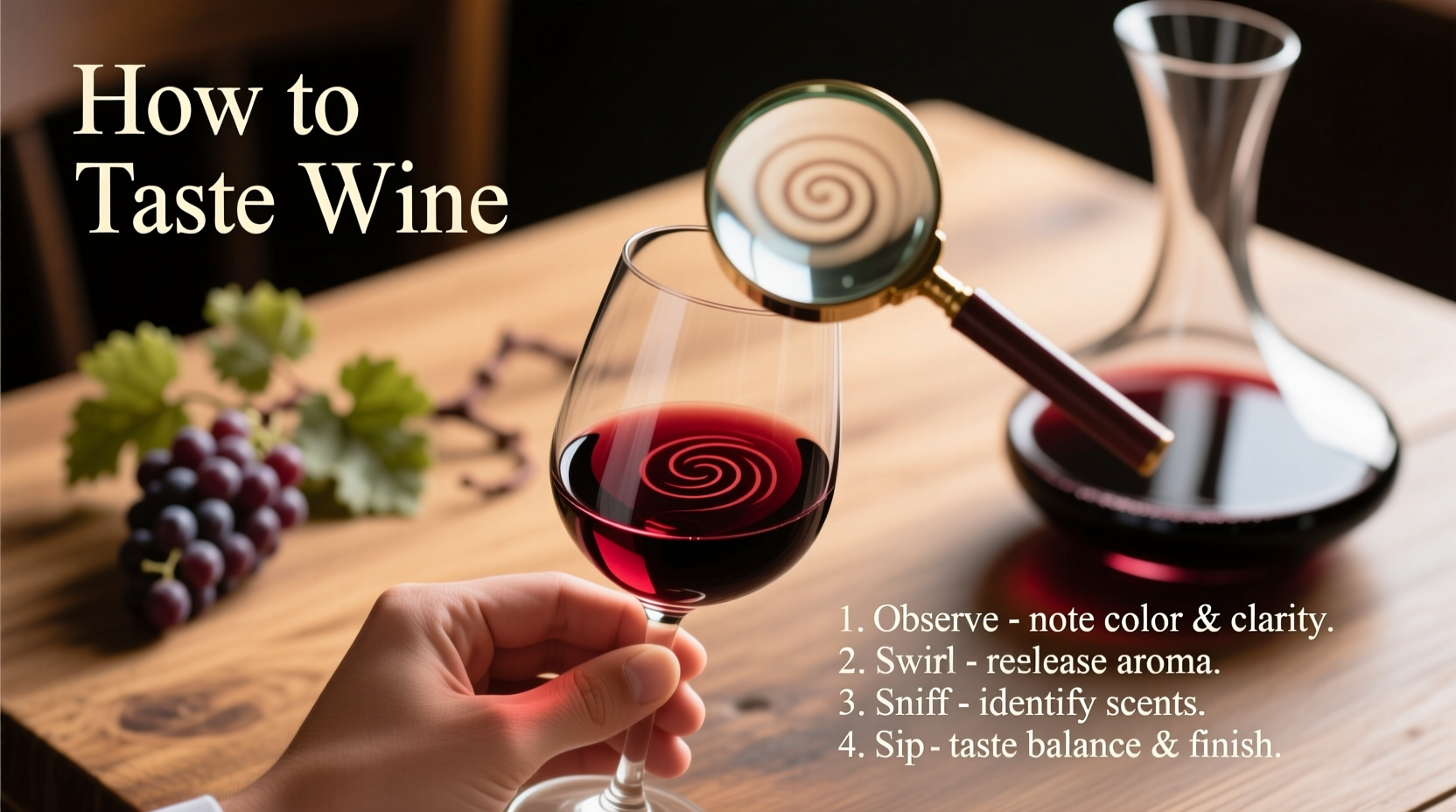Discover the authentic wine tasting process that sommeliers use to evaluate every glass. Unlike complicated methods that overwhelm beginners, this practical step by step wine tasting guide focuses on what matters most. You'll develop confidence to describe what you taste and make informed choices whether shopping at a wine store or dining out. The complete process requires no special equipment and works for all wine varieties - from bold reds to crisp whites.
Why Proper Wine Tasting Technique Matters
Many wine enthusiasts miss subtle flavors because they rush the experience. Professional wine tasting isn't about pretension - it's a systematic approach to maximize enjoyment. Research from the University of California Davis Department of Viticulture shows that following structured tasting methods increases flavor recognition by 47% compared to casual drinking. This science-backed proper wine tasting technique helps you appreciate the craftsmanship in every bottle.
| Wine Variety | Typical Color | Signature Aromas | Structure Profile |
|---|---|---|---|
| Cabernet Sauvignon | Deep ruby | Blackcurrant, cedar, tobacco | High tannin, full body, firm acidity |
| Pinot Noir | Translucent garnet | Cherry, earth, violet | Low tannin, medium body, bright acidity |
| Chardonnay | Medium gold | Apple, vanilla, butter | Medium acidity, full body (oaked) |
| Sauvignon Blanc | Pale straw | Citrus, grass, gooseberry | High acidity, light body |
The Complete Wine Tasting Process
Preparation: Setting the Stage
Before tasting, ensure proper conditions. Use clear tulip-shaped glasses filled one-third full, allowing room for swirling. Serve whites at 45-50°F (7-10°C) and reds at 60-65°F (15-18°C) - warmer temperatures exaggerate alcohol while cooler temps mute aromas. Eliminate strong odors from your environment, as even residual hand soap can distort perception. This beginner wine tasting tip creates optimal conditions for accurate evaluation.
Step 1: Visual Examination (30 seconds)
Hold your glass against a white background at 45-degree angle. Assess three elements:
- Clarity: Wine should appear brilliant, not cloudy (except intentional unfiltered styles)
- Color intensity: Young reds show purple hues; aged reds develop brick tones
- Viscosity ("legs"): Thicker streams indicate higher alcohol or sugar content
These visual clues provide early indicators of wine age and style. For example, a deep golden Chardonnay likely spent time in oak barrels, while a pale Pinot Grigio suggests minimal skin contact.
Step 2: Aroma Assessment (60 seconds)

Swirling releases volatile compounds. Place glass on table, trace small circles with base to avoid spills. Take three quick sniffs followed by one deep inhale. Identify scent families using this framework:
- Fruit: Citrus, stone fruit, berries, tropical
- Earth: Mushroom, forest floor, mineral
- Wood: Vanilla, toast, cedar (from oak aging)
- Other: Floral, herbal, spice notes
Avoid overwhelming descriptors - start broad then refine. If you detect "fruit," determine if it's citrus (lemon/lime) or stone fruit (peach/apricot). This how to identify wine flavors method builds your sensory vocabulary gradually.
Step 3: Palate Analysis (60 seconds)
Take a medium sip (about 15ml), letting wine coat your entire mouth. Note these structural elements:
- Acidity: Makes you salivate (high) or feels flat (low)
- Tannin (reds only): Creates drying sensation on gums and cheeks
- Alcohol: Warming sensation in throat indicates higher levels
- Body: Weight on palate (light like skim milk to full like cream)
Don't swallow immediately. Draw air through wine to aerate it, releasing additional flavors. Notice how flavors evolve from initial impression to mid-palate to finish. This wine tasting process explained technique reveals layers missed in casual sipping.
Step 4: Final Evaluation (30 seconds)
Consider these questions after swallowing:
- How long do flavors linger? (Short finish: <15 seconds; Long finish: >30 seconds)
- Is the wine balanced? (No single element dominates)
- Does the finish match the initial impression?
- Would you drink this again?
Balance represents harmony between acidity, fruit, tannin (for reds), and alcohol. A wine with high acidity needs sufficient fruit to counterbalance, while tannic reds require ripe fruit flavors to prevent harshness.
Advanced Techniques for Deeper Appreciation
Context Boundaries: Adapting to Wine Types
While the core process remains consistent, proper wine tasting technique varies slightly by wine style:
- Sparkling wines: Evaluate bubbles (fine, persistent streams indicate quality)
- Dessert wines: Assess sweetness-acidity balance (critical for enjoyment)
- Aged wines: Focus on tertiary aromas (leather, tobacco, mushroom)
- New World vs Old World: Recognize regional style differences (fruit-forward vs earth-driven)
Understanding these context boundaries prevents misjudging wines against inappropriate standards. A high-acid German Riesling shouldn't be compared to a California Chardonnay - each excels within its stylistic framework.
Timeline of Wine Tasting Evolution
Wine evaluation methods have evolved significantly:
- Ancient Greece (500 BCE): Judged by color and clarity using shallow bowls
- Renaissance Europe: Began associating aromas with specific regions
- 19th Century France: Formalized regional classifications (Bordeaux, Burgundy)
- 1970s California: Introduced systematic tasting grids and flavor wheels
- Modern Era: Combines sensory science with traditional methods
Today's wine tasting process explained approach blends centuries of tradition with contemporary sensory research, creating a reliable framework accessible to all enthusiasts.
Practical Applications
Shopping with Confidence
Apply these skills when selecting wine:
- At wine shops, ask for samples to practice your how to identify wine flavors technique
- Compare similar styles side-by-side to recognize quality differences
- Use tasting notes to find patterns in what you enjoy
When servers present wine in restaurants, take 30 seconds to evaluate before accepting. Check for faults like cork taint (wet cardboard smell) or oxidation (sherry-like aroma in non-fortified wines).
Avoiding Common Mistakes
New tasters often make these errors:
- Rushing the process: Each step requires dedicated attention
- Overcomplicating descriptors: Start with basic categories before advanced terms
- Ignoring temperature: Warm reds emphasize alcohol; cold whites mute aromas
- Using inappropriate glassware: Small openings trap aromas; wide bowls disperse them
Remember that wine tasting is personal - your impressions matter more than expert opinions. This beginner wine tasting tip reduces intimidation and builds confidence.
Making It Your Own
Develop a simple note-taking system that works for you. Many enthusiasts use the WSET (Wine & Spirit Education Trust) method: record appearance, nose, palate, and conclusion using basic terms. Track what you enjoy to identify patterns in your preferences. The goal isn't perfection - it's enhanced enjoyment through mindful appreciation. Within weeks of practicing this step by step wine tasting guide, you'll notice subtle flavors previously missed and develop confidence in your own palate.











 浙公网安备
33010002000092号
浙公网安备
33010002000092号 浙B2-20120091-4
浙B2-20120091-4